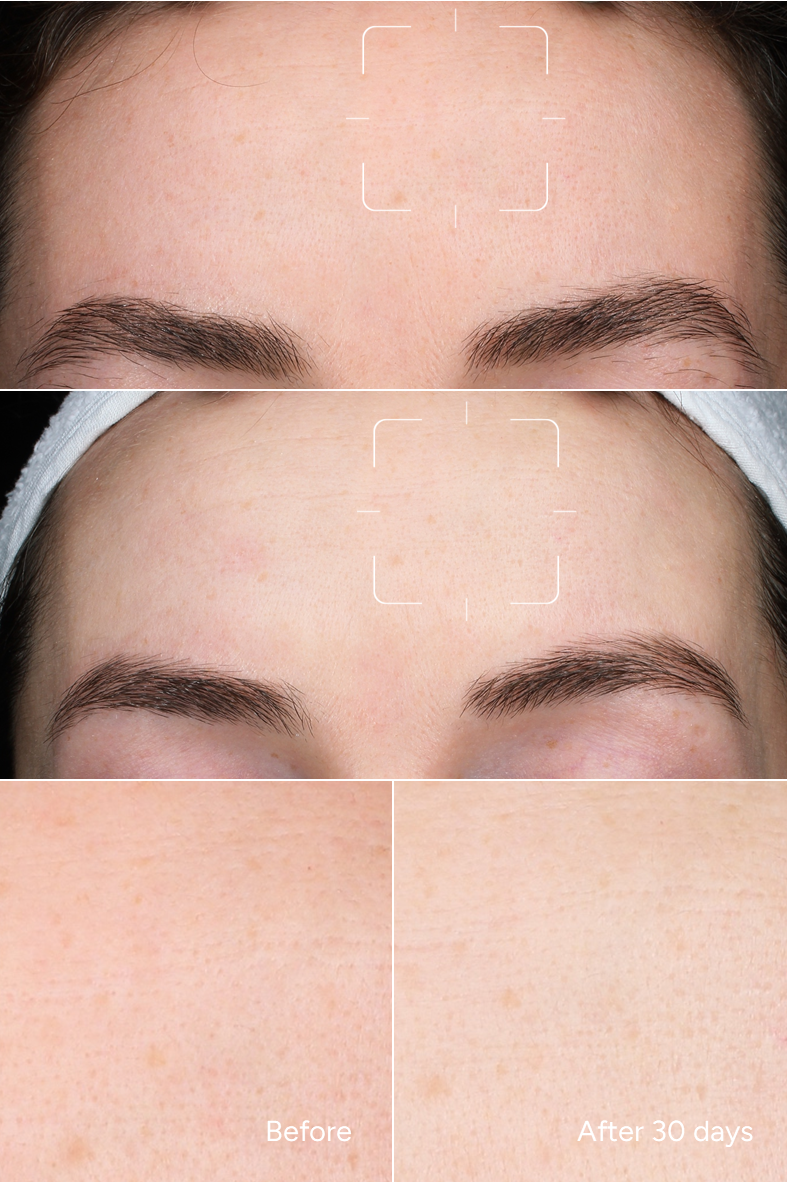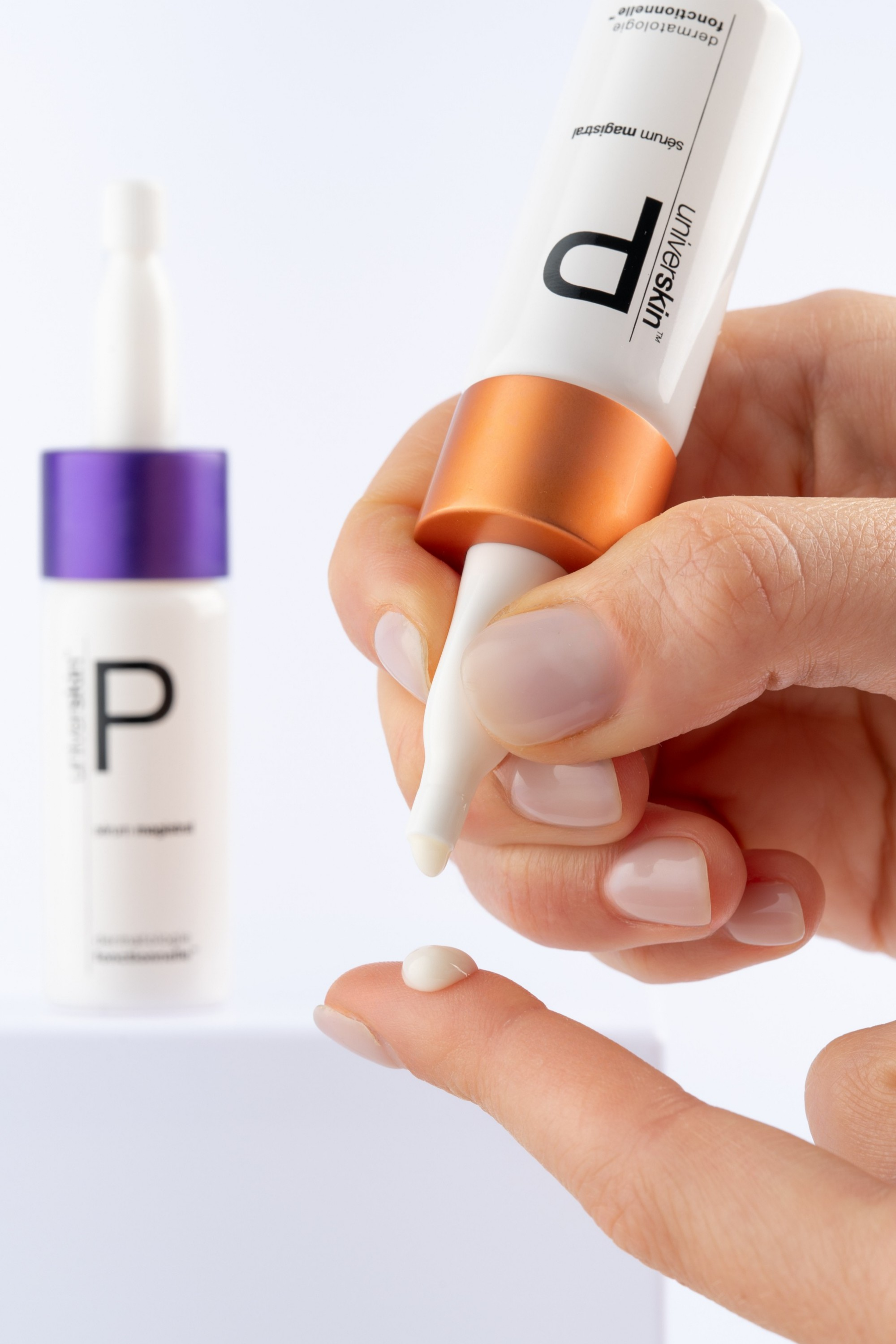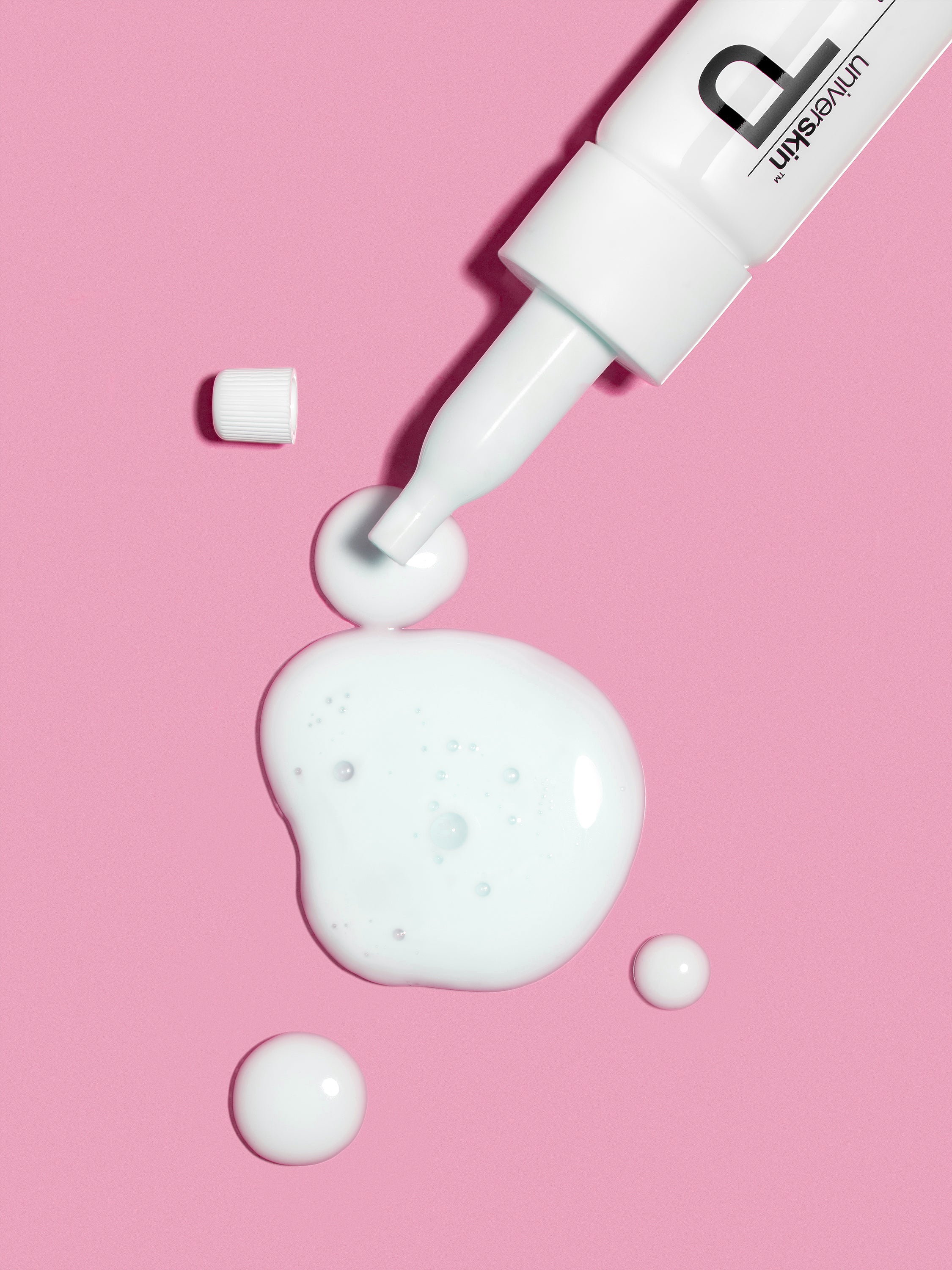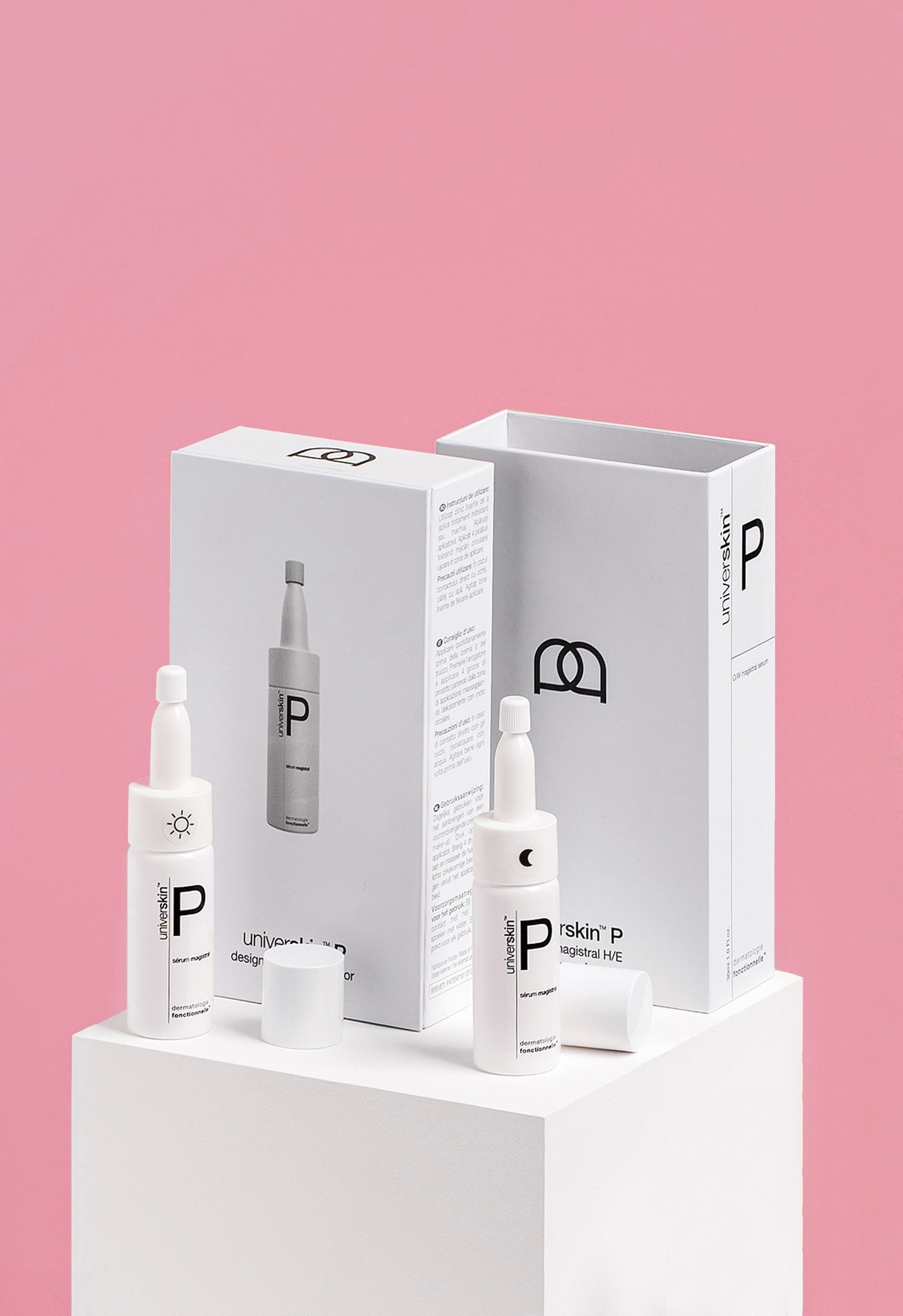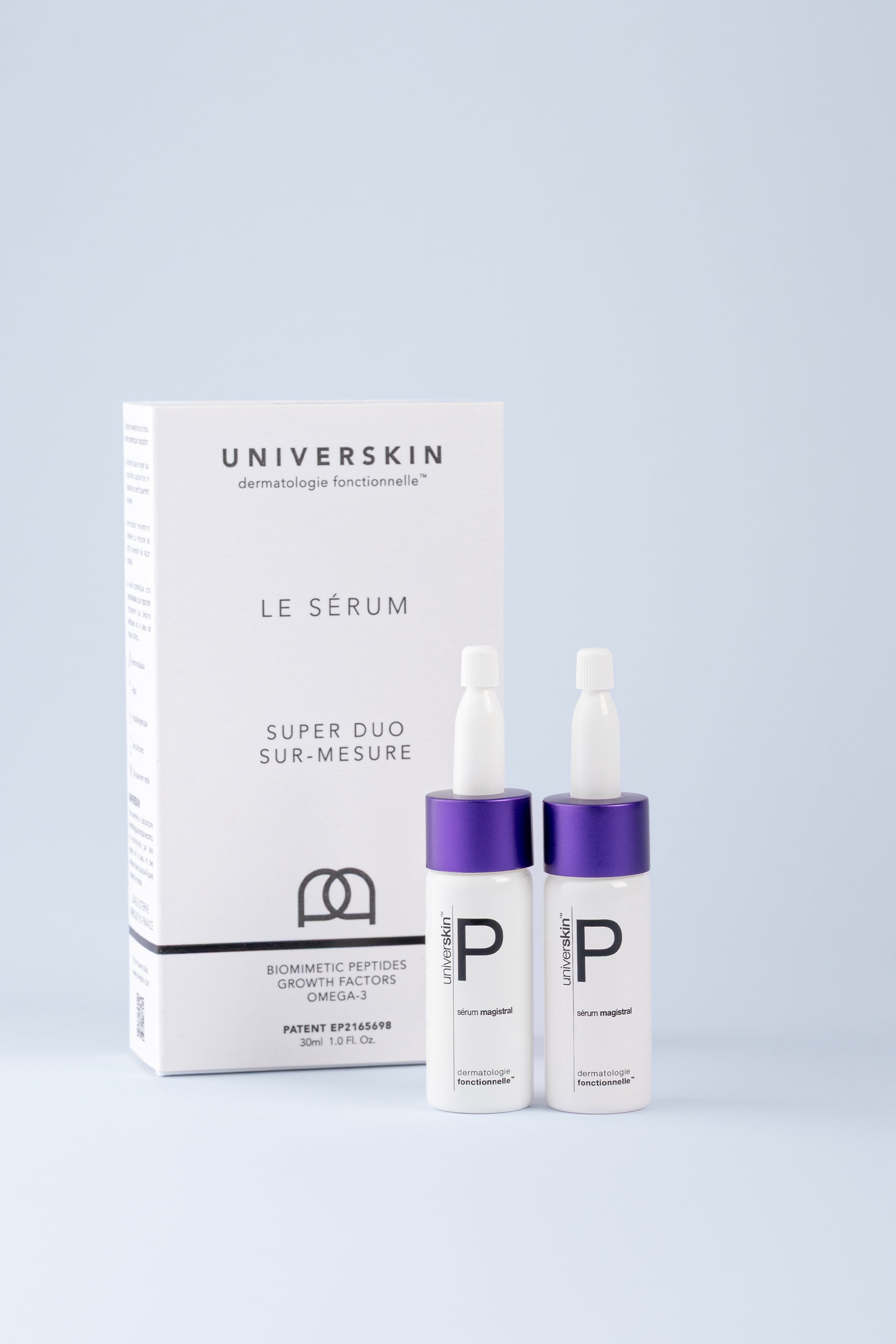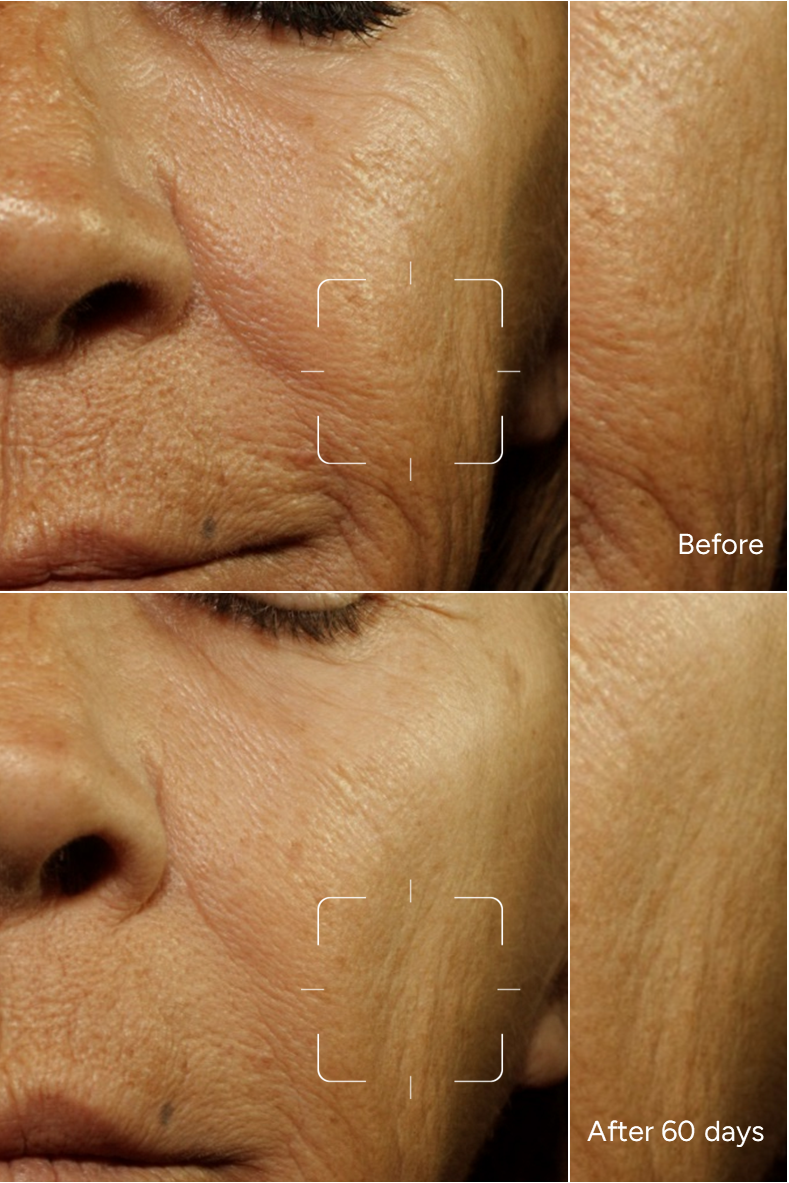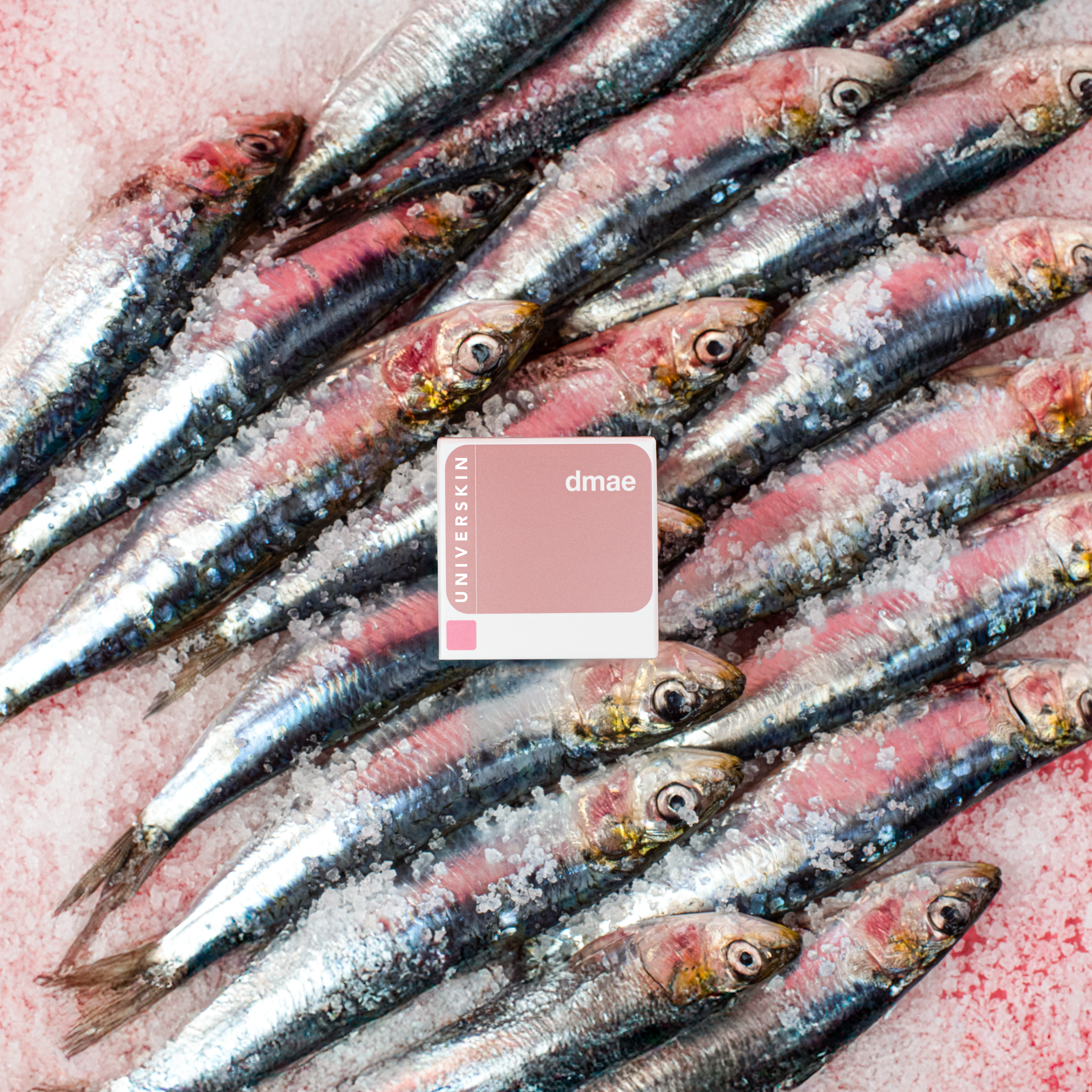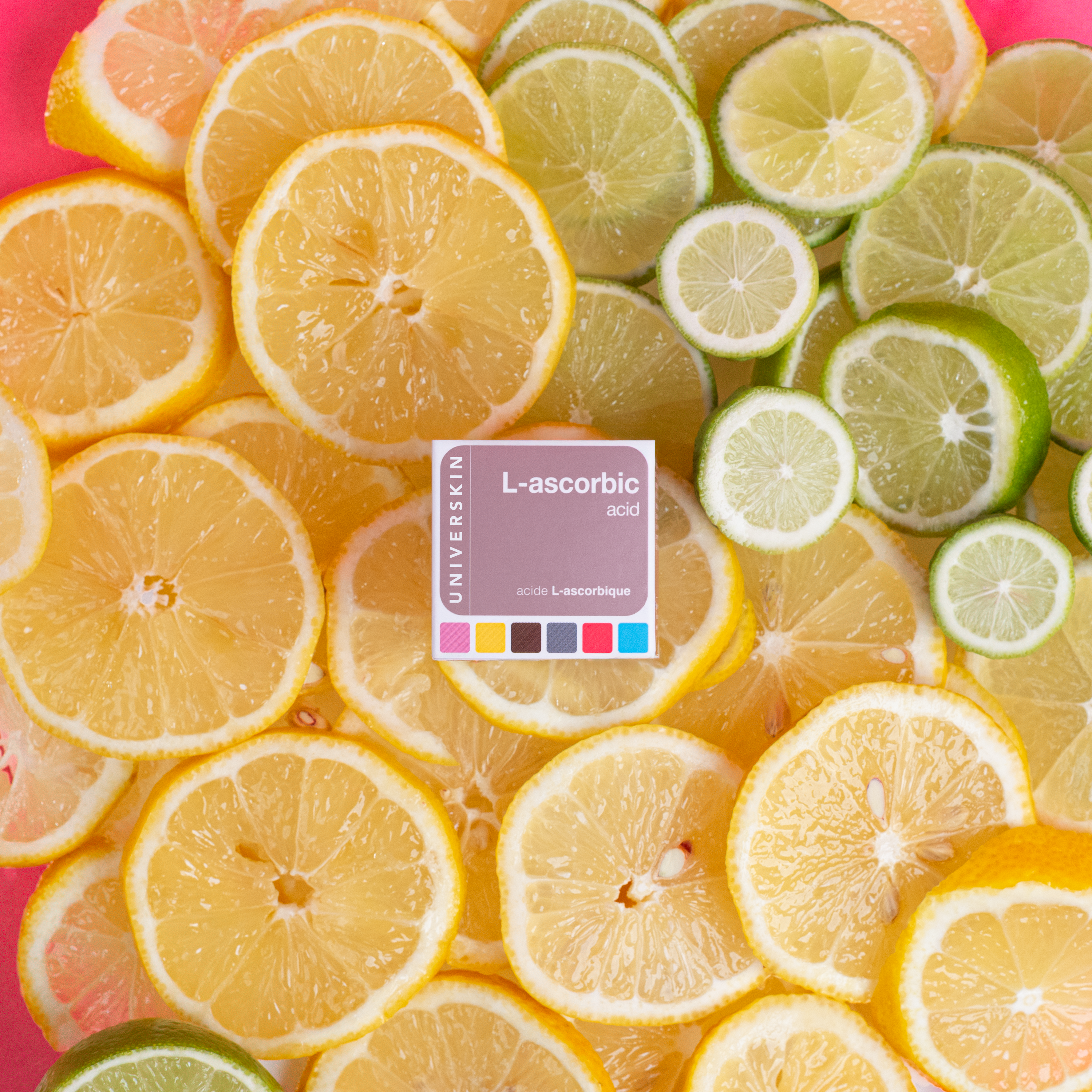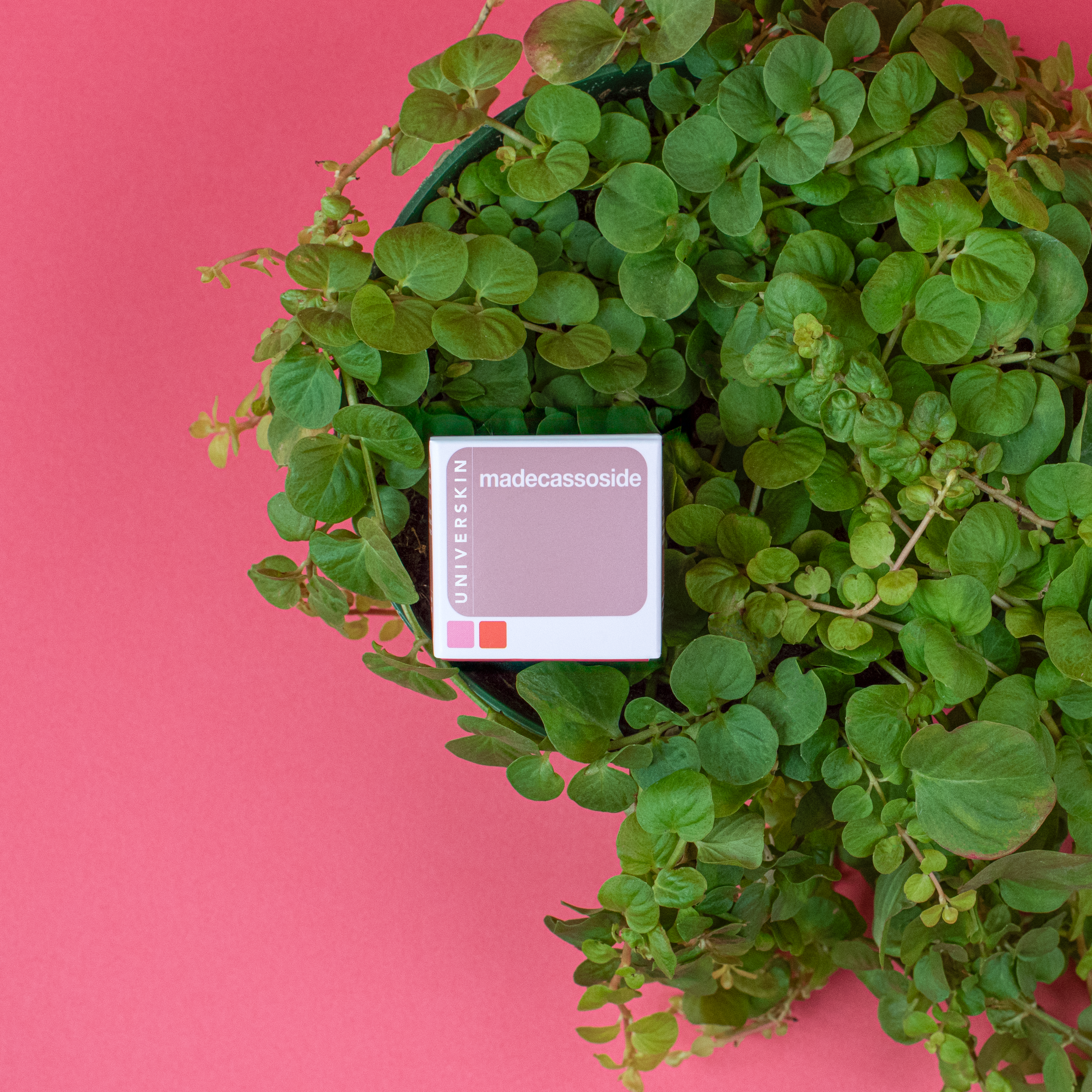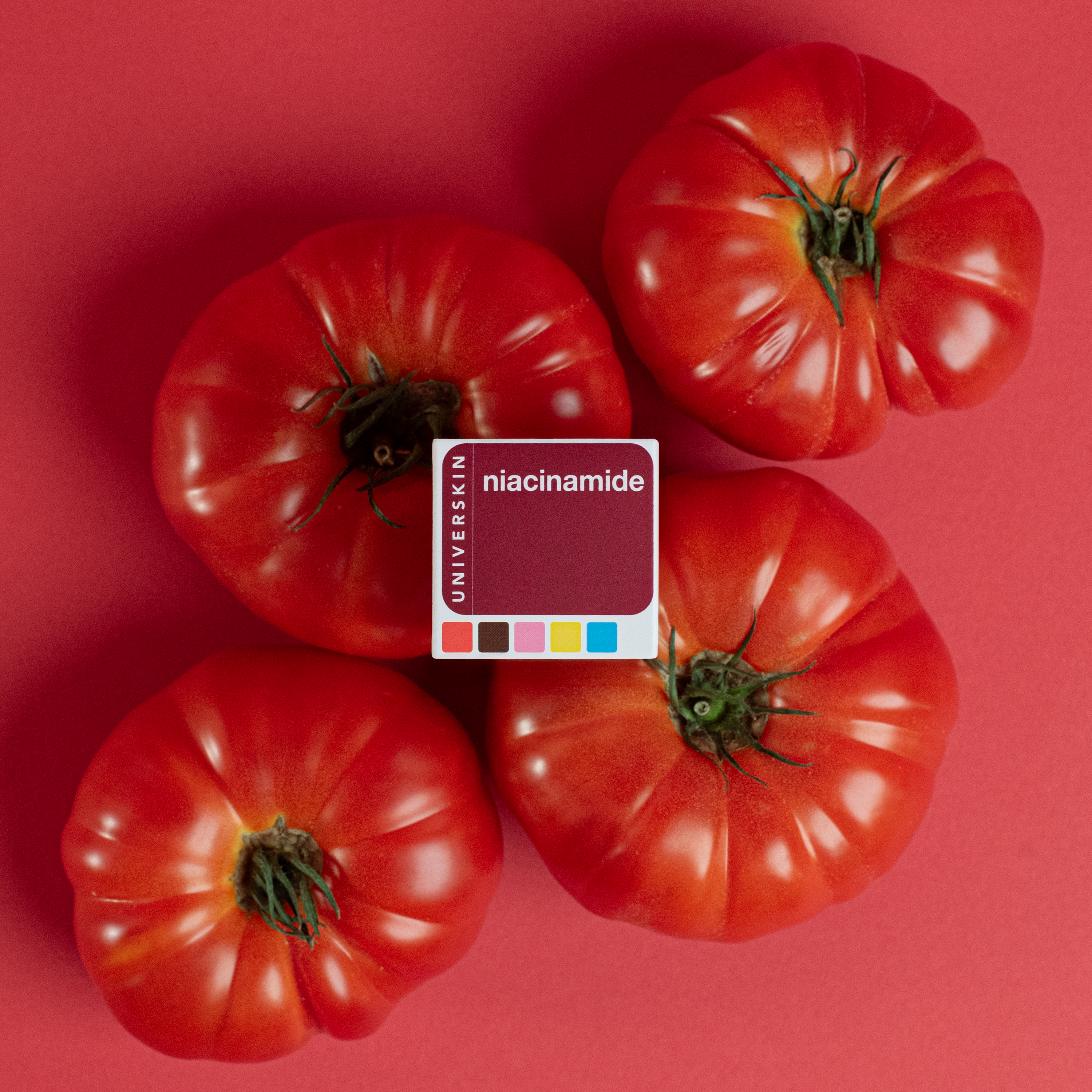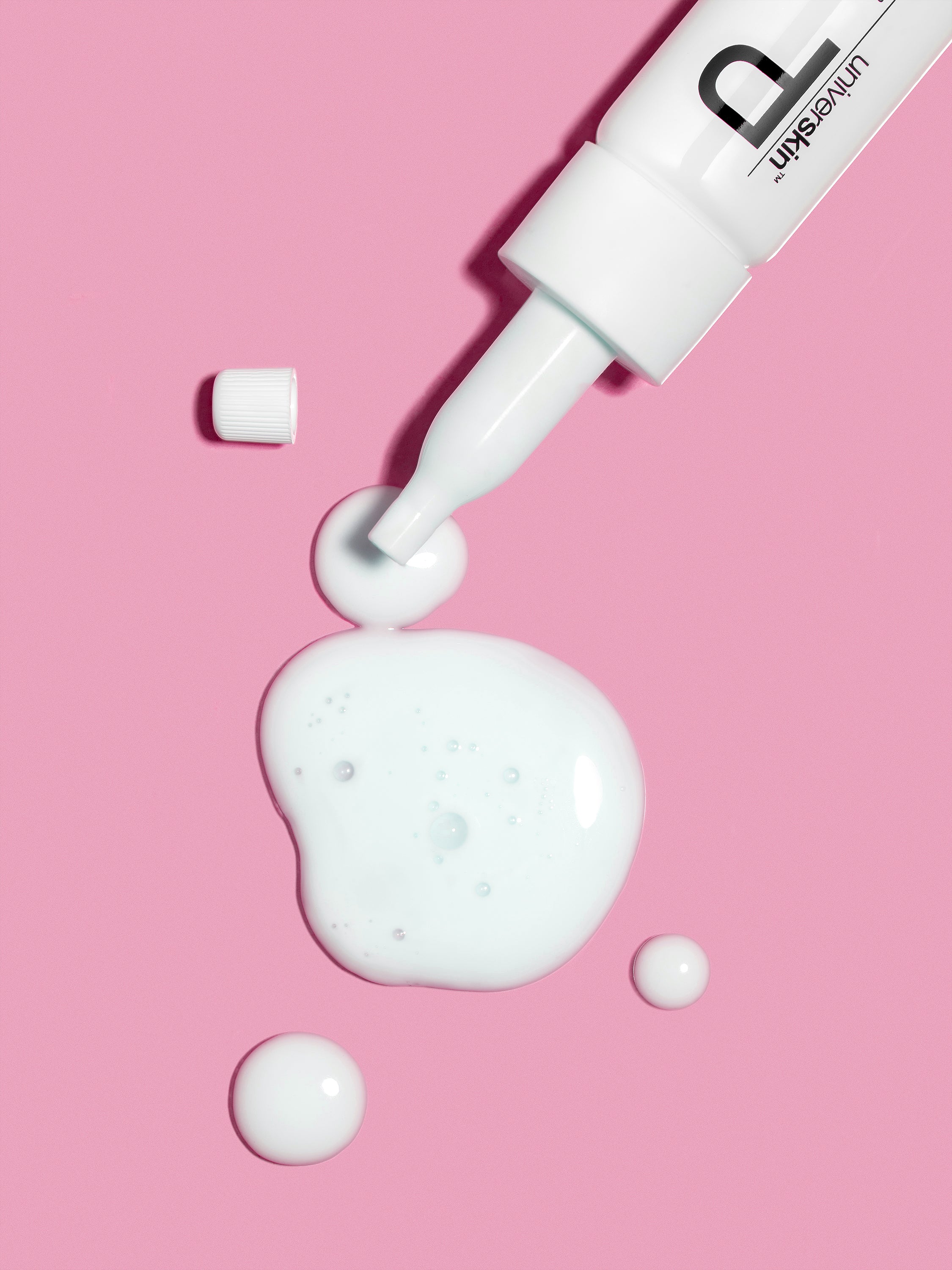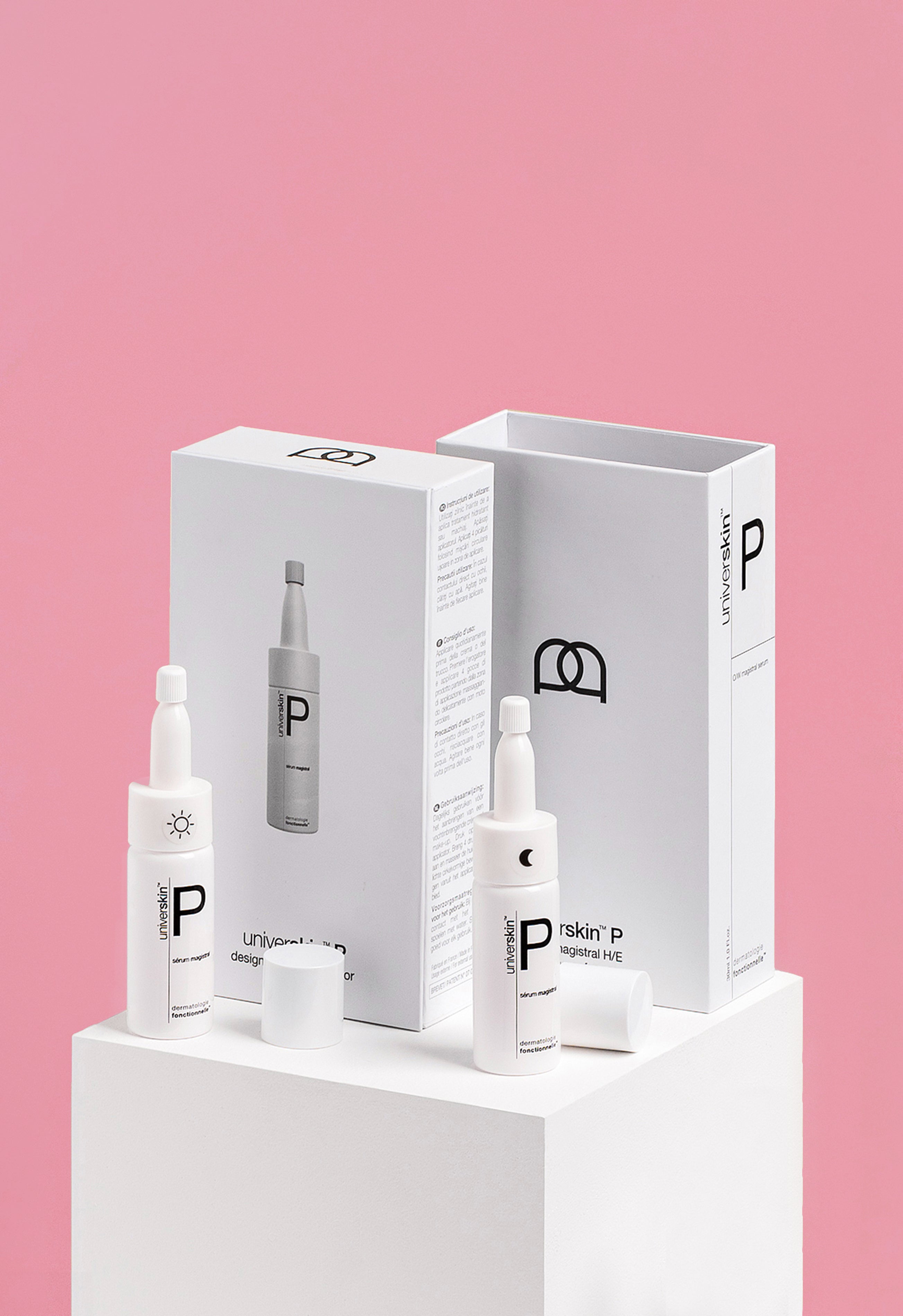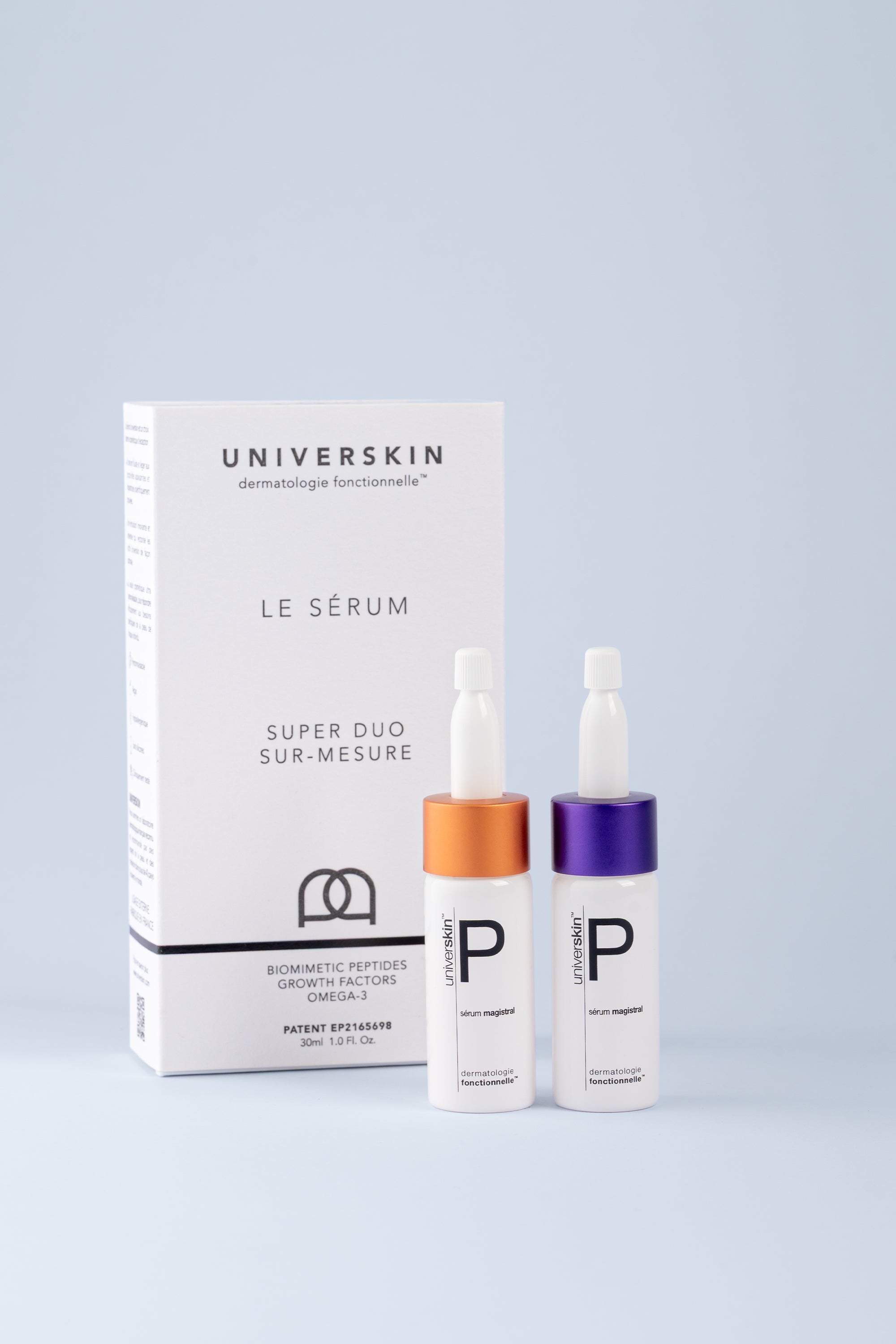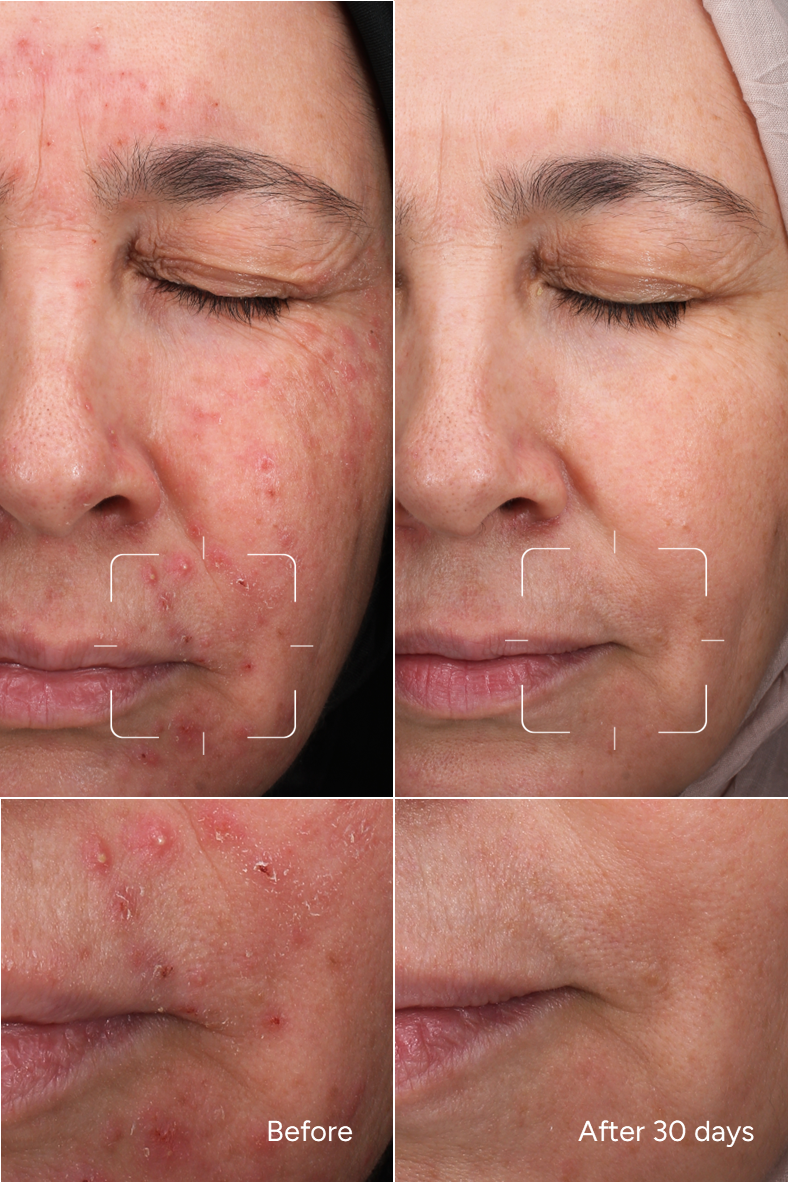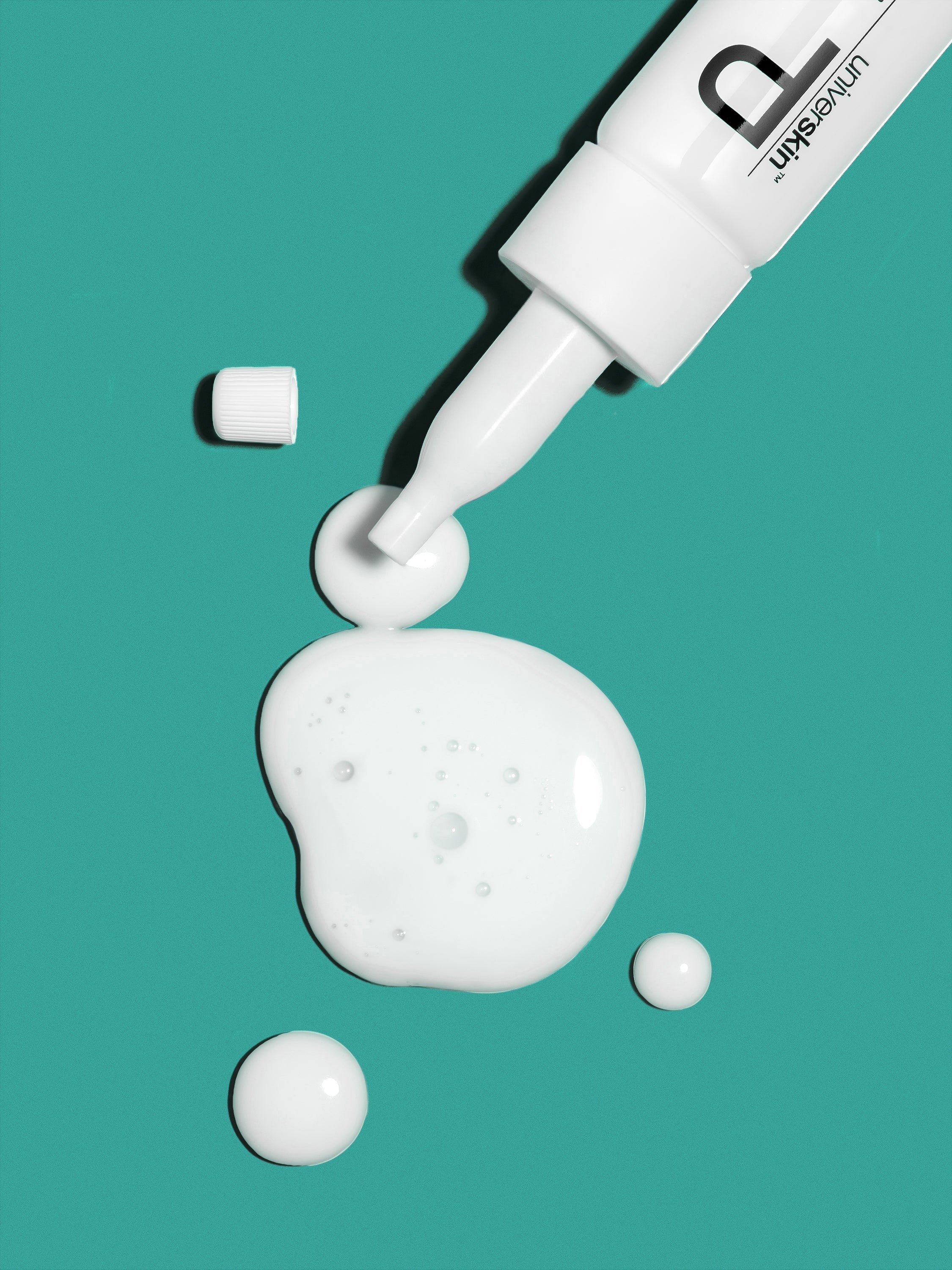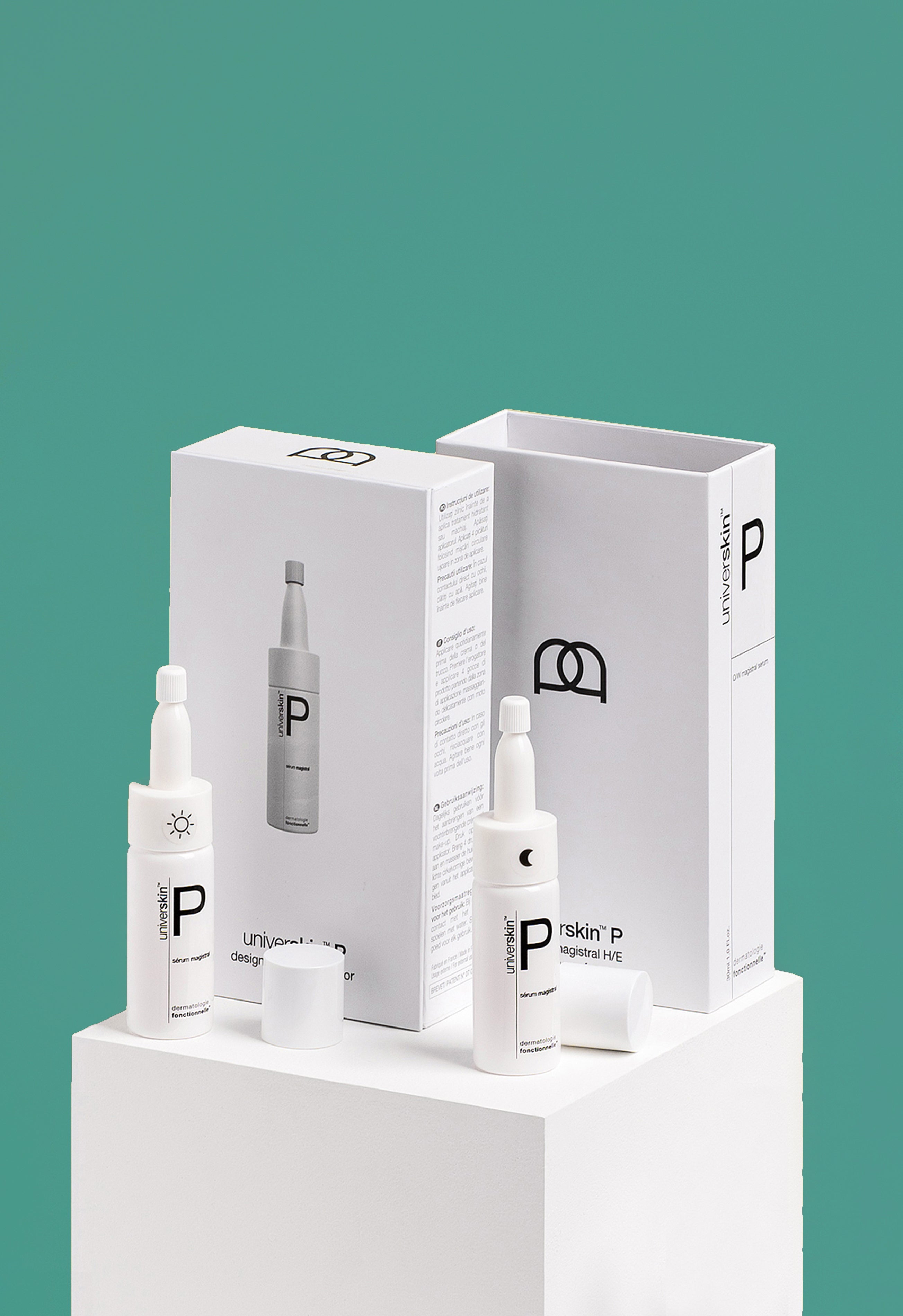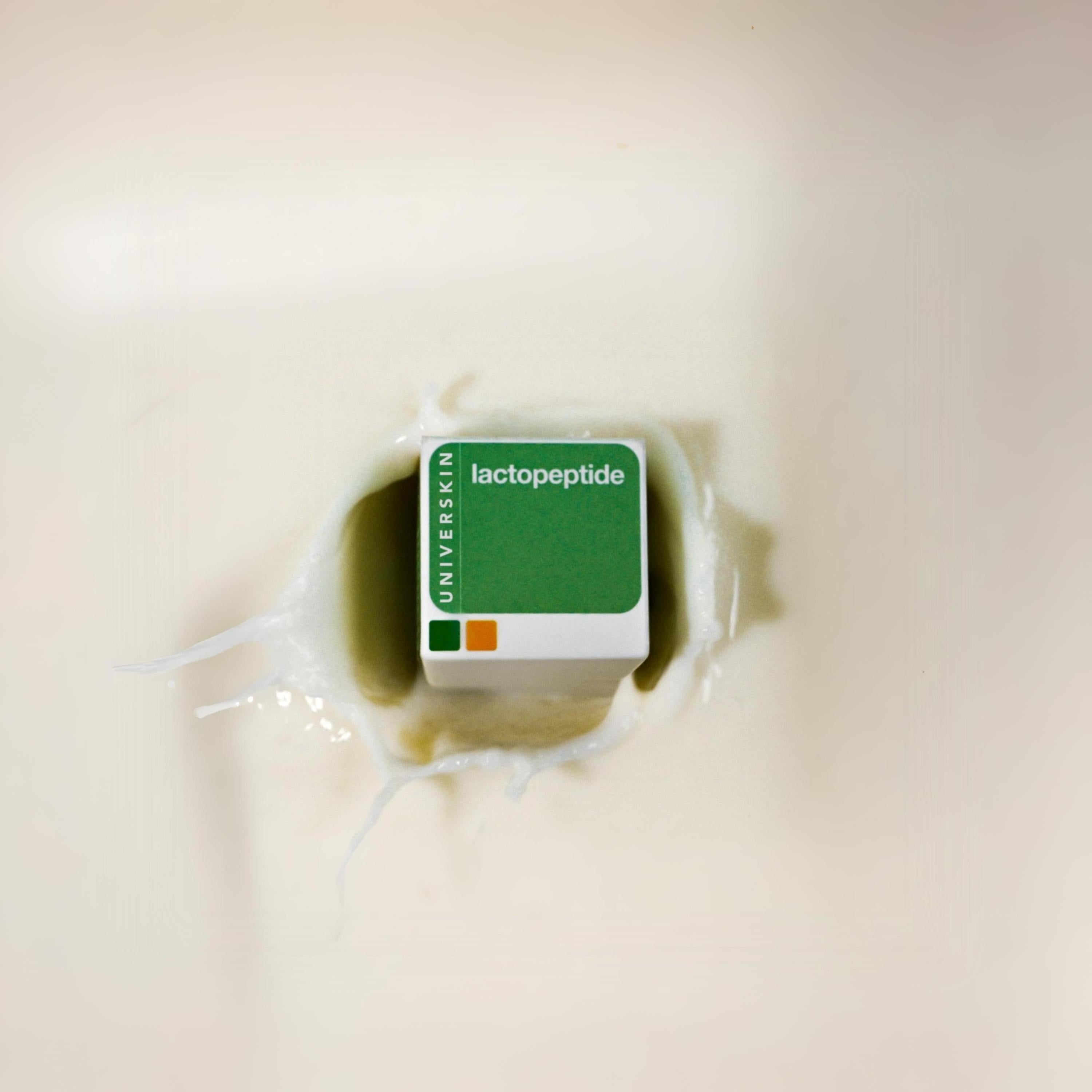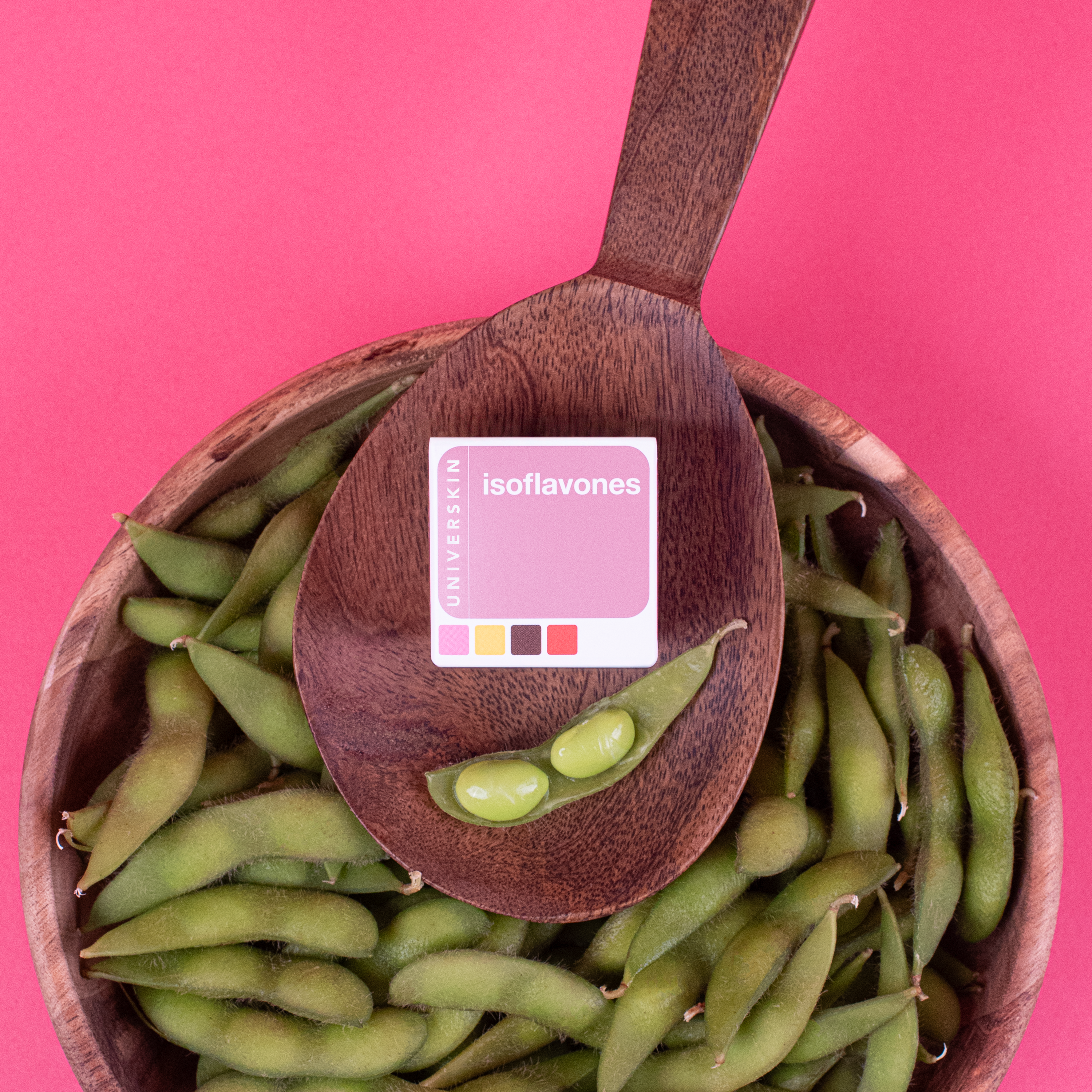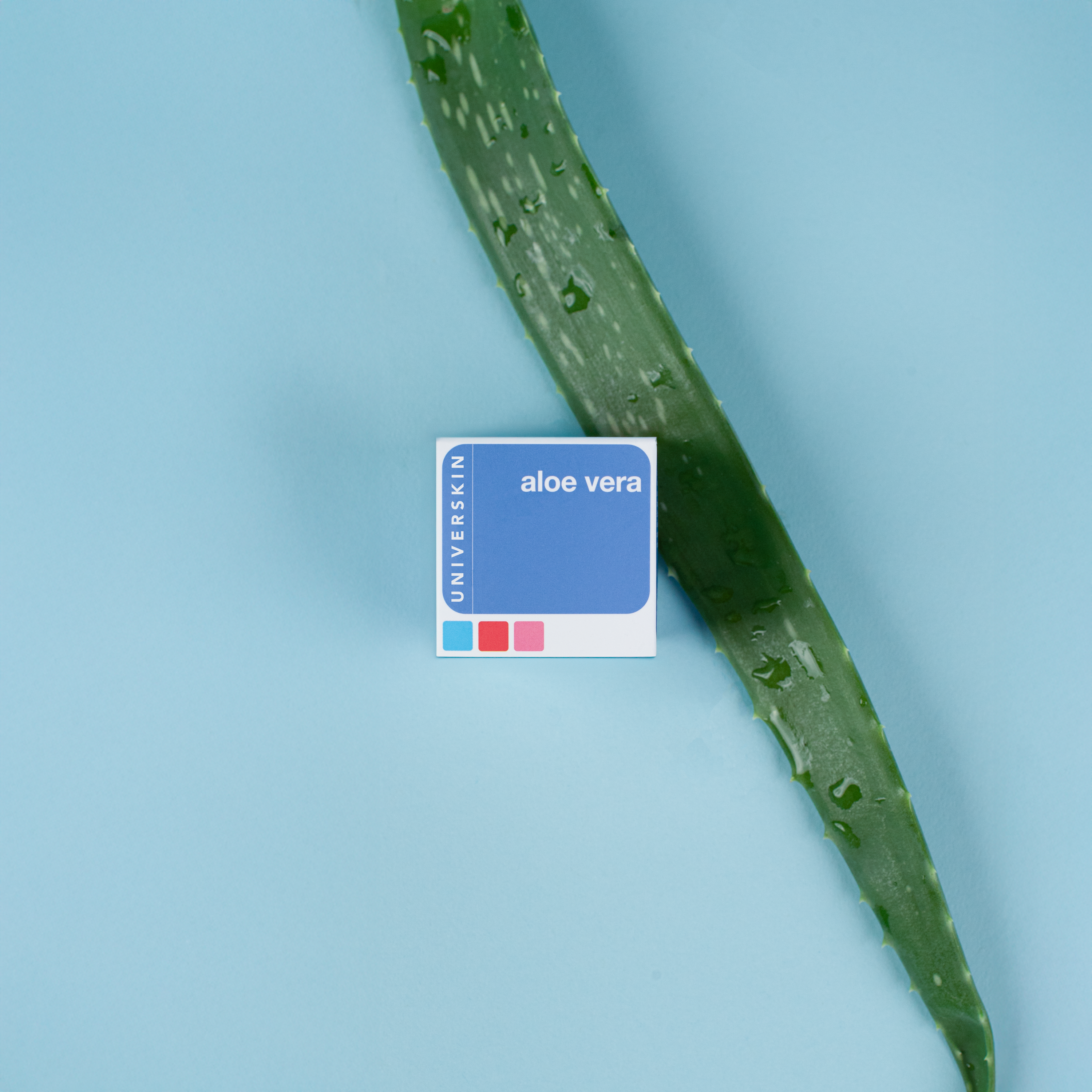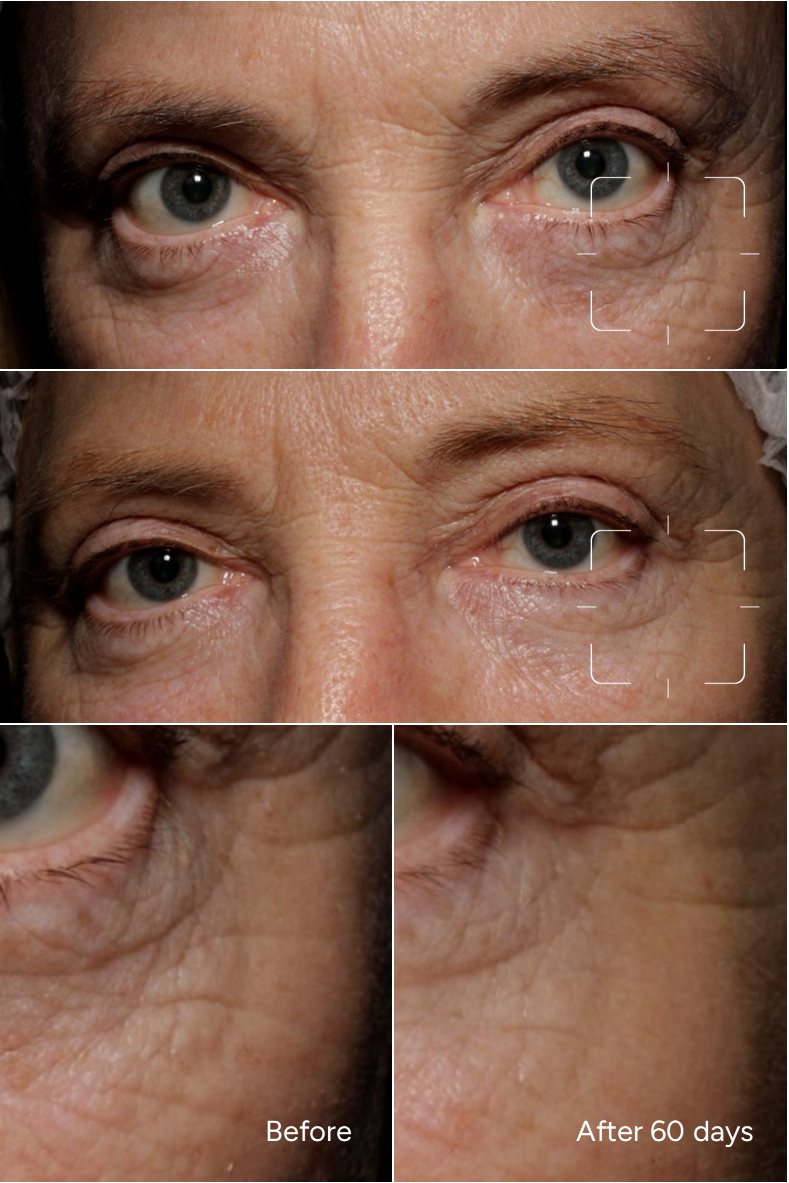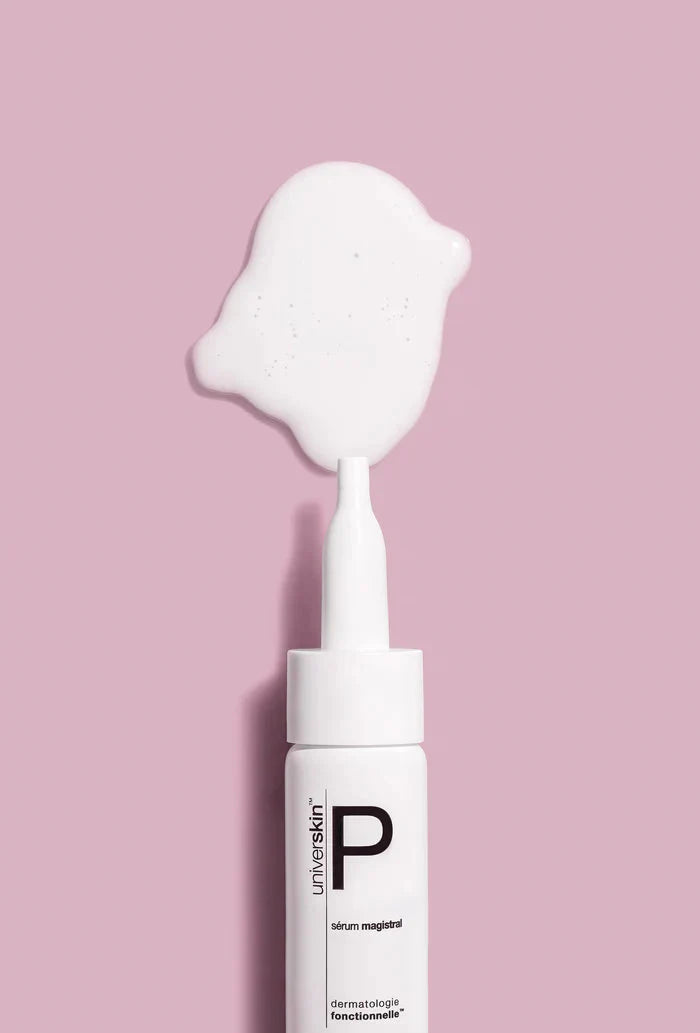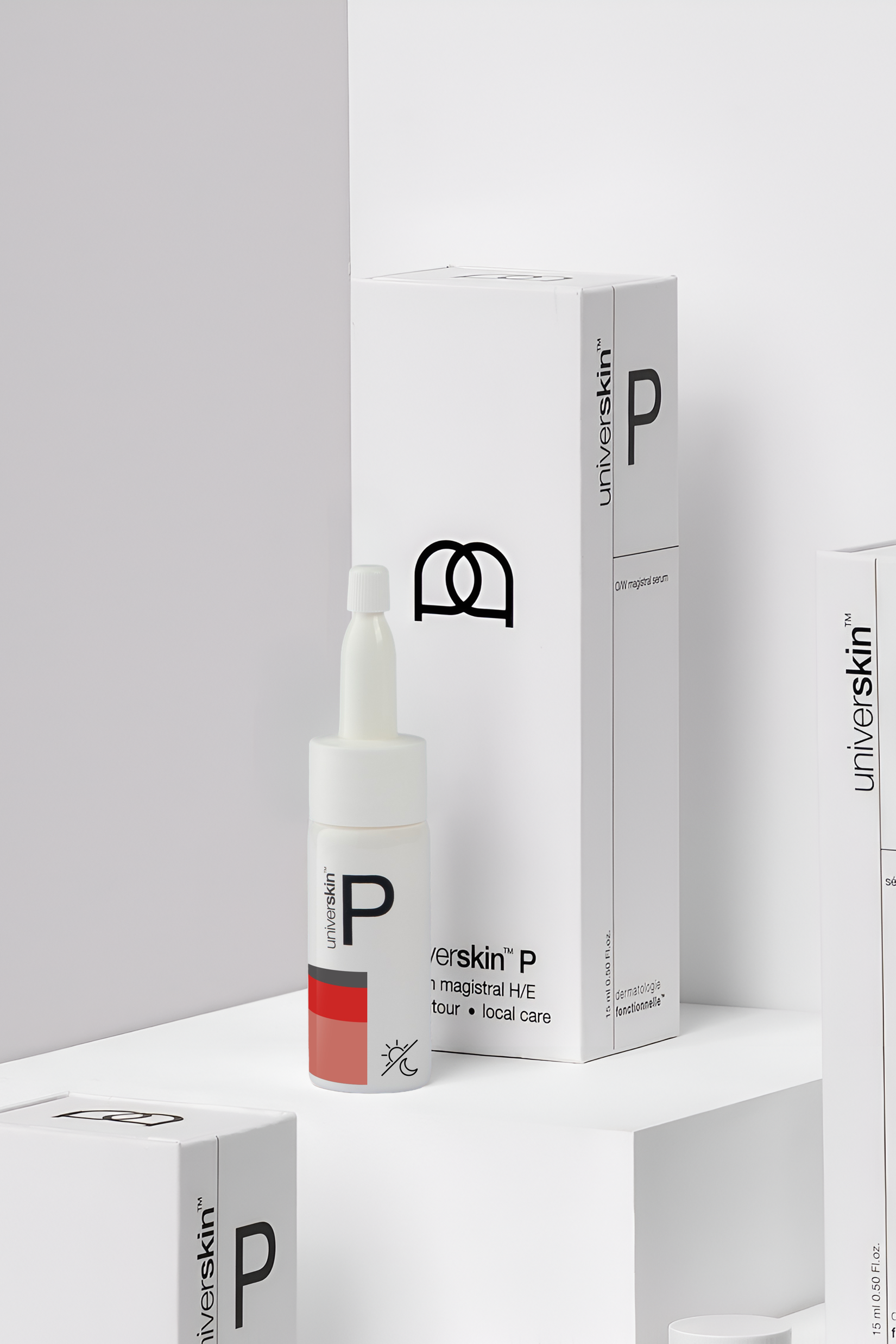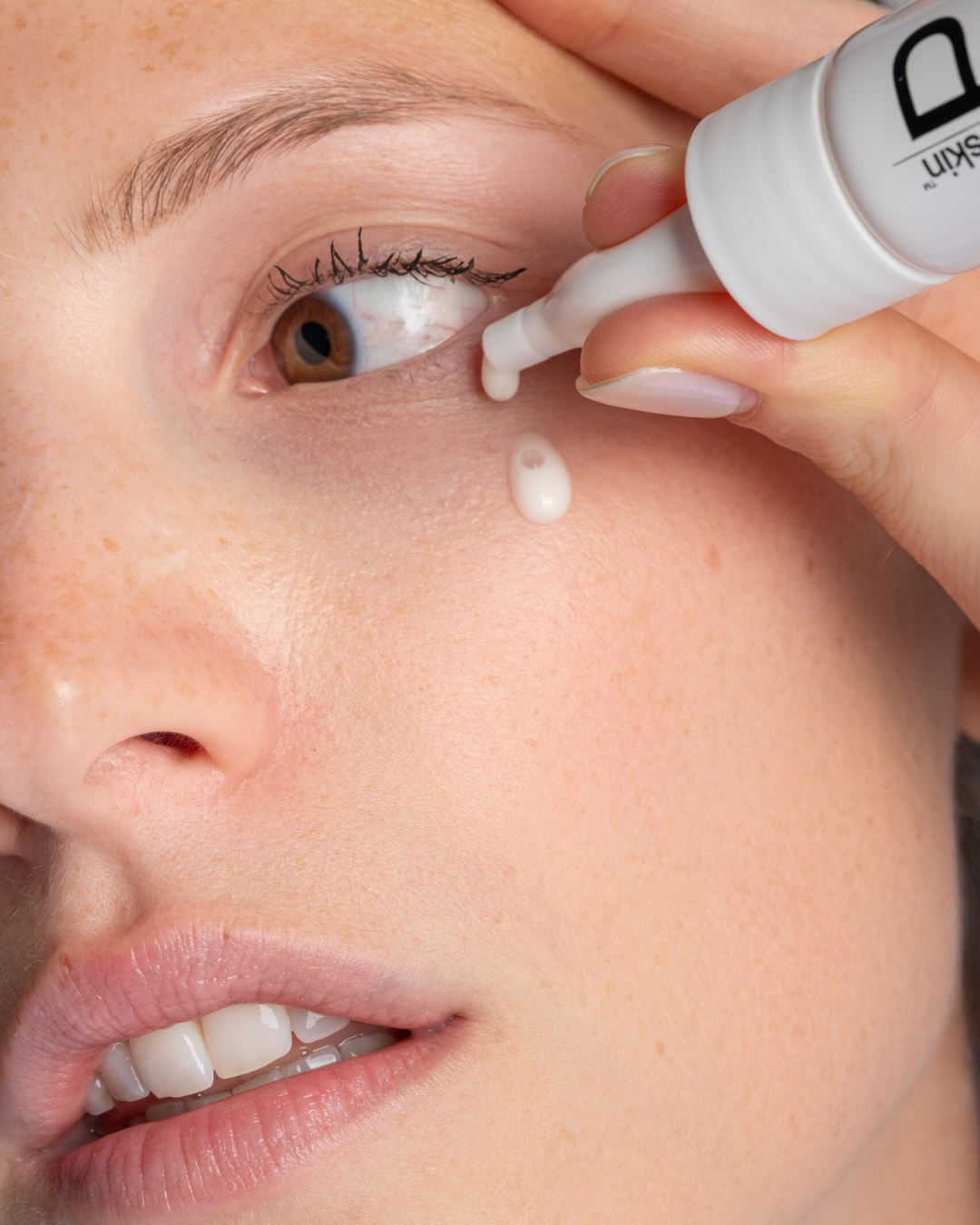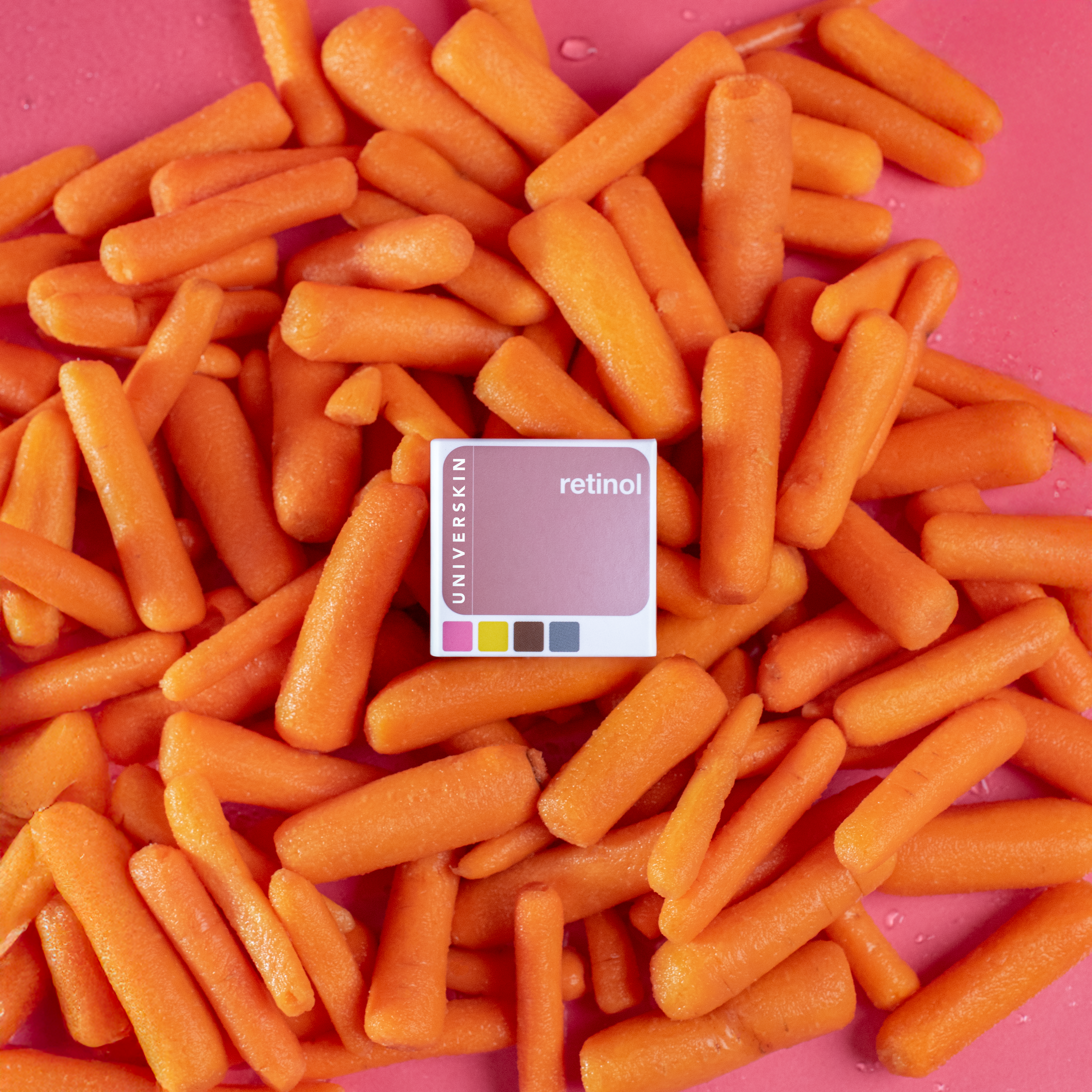
0.2% PER DOSE, UP TO 0.4%
Retinol
RETINOL
Retinol is a form of Vitamin A that is widely used in skin care products as the gold standard for combating the signs of aging, such as fine lines and wrinkles, pigmented spots, and a loss of volume and elasticity. This ingredient is very popular due to its ability to target multiple skin concerns and its potent effects on the skin.
Concentration
The concentration of retinol in skin care products can vary, but it is usually present in low to medium concentrations. So far, the optimal concentration to balance the skin irritation against effectiveness has not been well determined and the usual concentrations of Retinol in cosmeceuticals range from 0.01% to 1.0%.
It is important to start with a low concentration and gradually build up as the skin adapts.
Universkin Retinol is proposed at 0.2 to 0.6% strengths that give the ultimate to the skin between efficacy and tolerance.
The lowest strength gives the opportunity for very sensitive skin to get started with retinol.
Who Should Use It
Anyone looking for anti-aging effects, those who have already used Retinol and can tolerate Retinol. Those who have thin skin may benefit from using retinol with caution and at a low dose.

Can Be Used In Combination With
Retinol can be used in combination with other ingredients for added benefits. Used separately, one in the AM serum and one in the PM serum, alpha- and beta-hydroxy acids (glycolic acid, phytic acid, and salicylic acid) have commonly been used with Retinol to help further increase skin cell turnover. Using Retinol with L-ascorbic acid (vitamin C) and niacinamide (vitamin B3) can also help improve the skin's brightening effects. Mewied with DMAE, it reduces fine lines.
How Often Can You Use It
Retinol can be applied daily in the evening. However, the frequency of using retinol will depend on the concentration and individual skin tolerance. It is important to start with a low concentration and gradually increase the frequency of use as the skin adapts.
Don't Use It If
Pregnant women and breastfeeding women cannot use topical retinoids. It is recommended to avoid it on very sensitive and reactive skin. It is not recommended to use retinol in the same serum with vitamin C, DMAE, Glycolic acid, Phytic acid, and Salicylic acid.
Origins of the Ingredient

Retinol belongs to Retinoids, the synthetic and natural analogues of vitamin A. The retinoid family comprises Retinol and its natural or synthetic derivatives such as retinaldehyde or retinal, tretinoin or all-trans retinoic acid, retinyl esters, isotretinoin or 9-cis retinoic acid, etretinate, adapalene, tazarotene, as examples.
Retinol has the same biological features than vitamin A and is named vitamin A1. As Vitamin A cannot be synthesized by the body, it needs to be supplied to it. Naturally, it is present as retinyl esters and beta-carotene and found in foods like carrots, eggs and sweet potatoes.

The use of substances similar to vitamin A dates back some 3 000 years to ancient Egypt, where liver was used to treat endemic night blindness.

The modern history of retinol started early 1900’s when fatty extract of egg yolk was demonstrated as an essential factor in the viability of an embryo. The importance of Vitamin A in skin functions was discovered later during World War I, when scientists showed that its deficiency gives rise to xerosis and follicular hyperkeratosis.
Vitamin A was first synthesized in 1947 by two Dutch chemists. While tretinoin, the most potent synthetic retinoid, was the first that was used as a skin treatment against acne since the 1960’s, Retinol has been used in OTC products in the 1980’s.
Today, Retinol is the tried and tested form and most popular retinoid in skincare.
Chemical Composition
Chemically speaking, Retinol is a 20-carbon molecule that consists of a cyclohexenyl ring, a side chain with four double bonds (all in trans configuration), and an alcohol end group, hence the name all-trans-retinol.

As Retinol is soluble in oils and is a low molecular weight molecule (<400g/mol) it can easily penetrate the stratum corneum, the inner layer of the skin, through its lipidic matrix, and to a small extent, into the dermis. After topical application, Retinol is mainly found in the epidermis.
The irritant effect of vitamin A and its derivatives and their instability are factors limiting their use in cosmetics. As Retinol is unstable either to alkali (under oxygen) or to acids, is sensitive to oxygen, heat, light and heavy metals, it is very challenging if not impossible to keep it stable in cosmetics.
Mechanism of Action
Tretinoin or retinoic acid is the most bioactive among the retinoids. It proves to be approximately 20 times more powerful than retinol, but its use requires a medical prescription. Retinyl esters (retinyl palmitate, as example) are the weakest retinoids.
Retinol becomes active after transformation into more active metabolites, the most important one being the retinoic acid. Retinol is converted to retinoic acid through a two-step oxidation process; free retinol is taken up by epidermal keratinocytes and binds to cellular or cytosolic retinol-binding protein (CRBP).
The resultant complex is a substrate for retinol dehydrogenase (RoDH) enzymes that metabolize retinol to retinal. Then retinal is metabolized to Retinoic acid by the retinaldehyde dehydrogenases (RALDHs). Retinoic acid (RA) is bound in the cytoplasm by CRABP (cellular RA-binding protein). RA enters the nucleus and binds to the RA receptors (RARs) and the retinoid X receptors (RXRs), which themselves heterodimerize and bind to a sequence of DNA known as the RARE (RA-response element).
Benefits
Retinol is known for its potent anti-aging effects, including improving the appearance of fine lines and wrinkles, reducing pigmented spots, and restoring skin volume and elasticity. It also helps to improve skin texture and radiance.
Stability
As it degrades rapidly, Retinol is one of the most challenging molecules to formulate in skincare. Universkin experts decided to select a micro-encapsulated form of pure Retinol rather than retinyl esters. Microcapsules keep Retinol perfectly stable in formulations. It is entirely efficient while gentle on the skin compared to non-stabilized retinol.
In conclusion, Retinol is a highly effective anti-aging ingredient that targets multiple skin concerns. Its mechanism of action involves increasing cell turnover, stimulating collagen production, and reducing the formation of pigment. Retinol is suitable for adults and can be used in combination with other anti-aging ingredients for added benefits. However, it is important to start with a low concentration and gradually increase the frequency of use as the skin adapts. Pregnant and lactating women should avoid using retinol.
Featured collection


